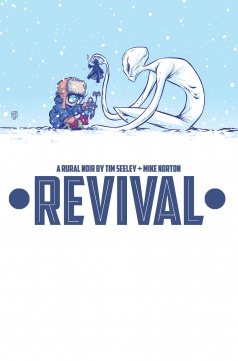
The high volume of variant and incentive covers has led some people to worry sales are inflated and another market crash is imminent. To see if this concern is valid, I reached out to dozens of comic shops across the US (and a few international ones) to find out just how important variant sales really are to them, and what would happen if all the variant buyers disappeared overnight.

When you want to find out how significant variants are to the industry, the obvious place to start is: How many customers are buying them?
The average (mean and median) reply was 10%, with a range of 1 to 30%. This number is all inclusive, so the readers who only buy an occasional variant are lumped in with the buy-em-all crowd. It falls far below what some people have previously estimated, and seems like a very reasonable percentage to me. It’s large enough to give stores a small sales boost, but it’s certainly not an over leveraged position.
If you’re worried about an impending variant bust, you can relax. If publishers stop offering variants, the 10% who buy them won’t quit being customers. Not a single retailer indicated their sales are to speculators who don’t read the material. The variants are sold in addition to a reading copy. Furthermore, when asked how important the sales boost from variant mark-ups is to their bottom line, the near-universal answer was “Not very.”
Only one store, Black Cat Comics, went so far as to say “somewhat.” Owner Greg Gage explains:
It seems fewer stores are stocking variants lately. If we have something another store doesn’t, it’s obviously a useful tool, but more of a long term one. Just to get a person in the door is half the battle, and if they see something interesting, it can lead to repeat business and future sales.
So for the stores who said variants are important to their sales, it’s still qualified as being a simple case of attracting customers with a bigger selection. That means any kind of decline in interest for variants would be insignificant to the store’s survival.

A common complaint about variants is retailers being stuck with unsellable merchandise. Retailers said incentive covers rarely affect their orders, and the numbers bear this out. Sales reliably rise about 8% when a 1:10 variant is offered. A 1:10 ratio means one of out every 11 books is a variant because it’s “one to ten,” not “one in ten.” If you imagine an ideal comic shop that orders exactly ten copies of a book, and that it purchases the variant when offered, it’s increasing its orders by 9%. Nine. Not eight. So what that 8% sales jump for 1:10 variants really means is that, as a whole, no extra copies of the book are being ordered aside from the variant cover. Hence, no extra piles of unsold merchandise.
This breaks down for the higher ratios, but most retailers indicated they only ordered those rarer books if they had pre-sold the variant, in which case they are losing no money.
There’s a very obvious force that keeps retailers from overextending and gambling on ultra-rare incentives: the widespread lack of interest in back issue variants. All the retailers who stocked back issues agreed there’s a very brief window to sell an incentive; that window is no longer than one month, and usually closer to one week, because collectors who want a variant cover want it immediately. After that, it’s near impossible for them to recoup any lost investment. There may be a few stores out there who occasionally take a big risk and order with the hope of a big payday, but no store doing that repeatedly will last long.

When asked if there’s a particular type of variant that sells better – be it theme, artist, rarity, or whatever – nobody could agree. Artist was mentioned as a determining factor most often, but was still a long way from a majority. Price and/or rarity was also an important factor, but was spread to both extremes. Black Cat Comics indicated variants sell better when they’re common enough to sell at cover price, and a few claimed it was easier to move rarer ones. Greg van Every of Mile High Comics said the character or title was the best indicator of interest, with titles like “Transformers” mentioned specifically.
Continued belowThe big takeaway for this jumble of answers is a positive: there’s a buyer for every type of variant.
There’s one last topic to address: cover confusion. If you browse message boards or blogs, it won’t take too long to find some anecdotal evidence that variants are discouraging to new readers. Unfortunately, retailer replies suggest this one to some extent is real. Here’s Greg Gage again:
It’s very non new reader friendly. If someone comes in to the store for the first time, it’s difficult for them to understand that even though the cover is different, it’s the same book. I’ve had many new customers accidentally buy two of the same book.
He’s echoed by Robert Scott from Comickaze:
A lot of people will see an image they like in an article and not realize that it is a limited edition that will not be cover price or are upset that we did not get enough to allow them to get one.
And Tawna from Fat Cat Comics:
There have been times when I hear someone say, ” Did I get this issue, I don’t recognize the cover ?
Giant Robot Comics tries to put this into perspective:
In this business I see a lot of people get frustrated by a lot of little things. I always tell people if they don’t like it don’t buy it.






